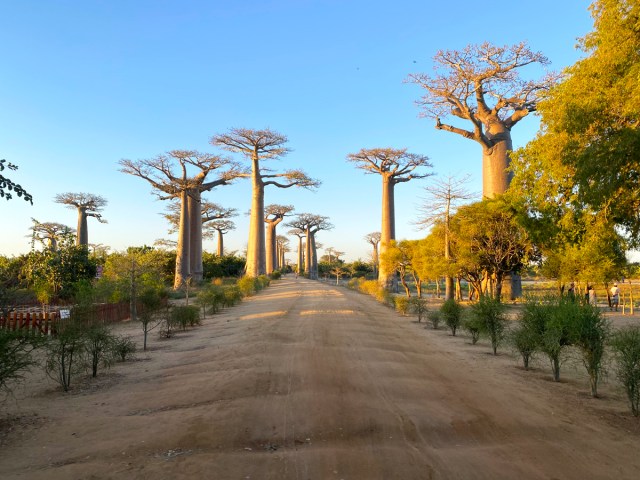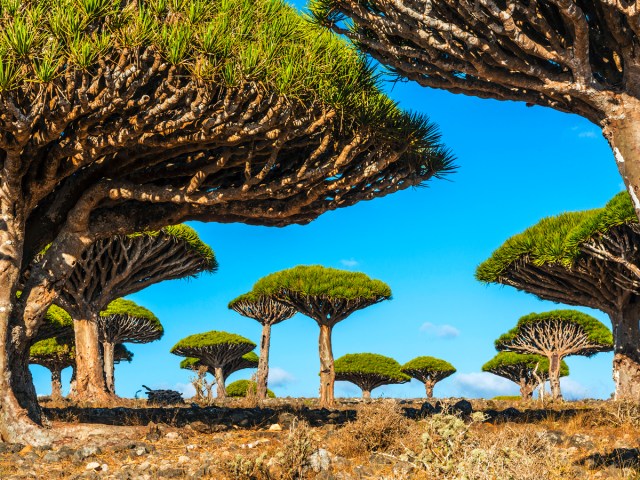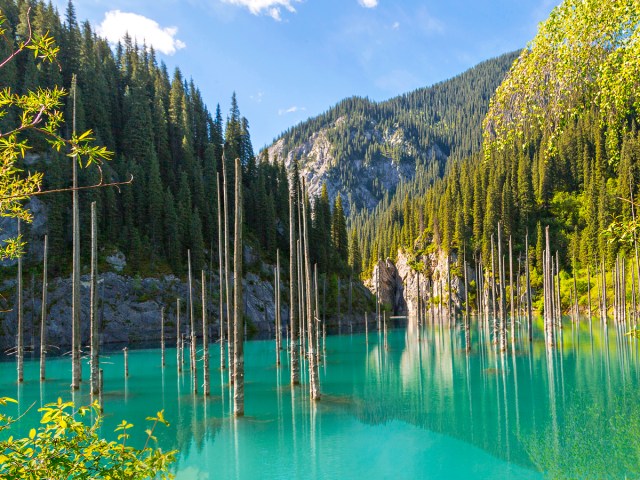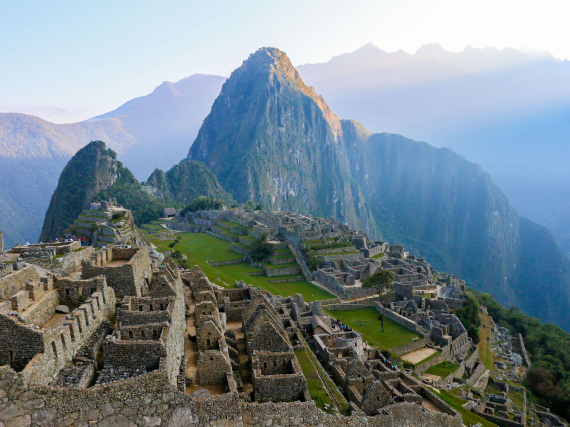The planet is home to an estimated 10 million acres of forests, covering around 31% of Earth’s surface. These dense areas of trees and vegetation provide oxygen, habitats, and climate regulation that help sustain life worldwide. However, some forests have grown to defy the norm, standing as Mother Nature’s masterpieces. From otherworldly landscapes where trees appear to twist and dance against the sky to submerged trees preserved underwater, venture beyond the familiar and discover six of the world’s most unusual forests.
Avenue of the Baobabs – Madagascar

Lining both sides of a dusty road between the towns of Morondava and Belon’i Tsiribihina, the Avenue of the Baobabs is one of Madagascar’s most iconic landmarks. This 850-foot stretch houses around 25 Adansonia grandidieri trees, the largest of the island’s six baobab species. Once part of a dense forest, they now stand in smaller numbers due to deforestation and development on the island.
The trees, which are characterized by bulbous trunks and branches that look like roots, are often called “upside-down trees.” They can grow up to 100 feet tall and 36 feet in diameter, and live for more than 800 years.
Beyond their striking appearance, baobabs are also a useful natural resource for island communities. The fruit contains a nutritious pulp, the trunks can be tapped for water during the dry season, and the bark can be extracted to make rope and baskets. According to local legend, the trees’ appearance is the work of the gods, who uprooted and replanted them as a punishment for the trees’ arrogance and vanity.
Crooked Forest – Poland

While most trees grow straight, a cluster of Scots pines in northwestern Poland defy convention with their striking J-shaped trunks. Called the Crooked Forest (Krzywy Las), this 1.25-acre grove contains over 100 trees that were planted in the mid-1930s.
Each tree is remarkably similar: Their trunks bend northward about 4 to 20 inches above the forest floor before curving back upright in bow-shaped bends ranging from 3 to 9 feet. Growth rings on the knots suggest the curvature in their trunks took place when the trees were between seven and 10 years old.
While scientists and historians aren’t exactly sure what caused the trees to take on their curious shapes, plenty of legends abound. Some say that foresters manipulated them to be used later for building boats, furniture, and other household items. Others say that it was the result of a gravitational pull, a snowstorm, or even World War II tanks flattening the saplings. Today, interpretive signs around the forest present various theories, leaving visitors to decide for themselves.
Deadvlei – Namibia

Though not a forest in the traditional sense, the ancient camel thorn trees of Deadvlei are among the most haunting sights in Namib-Naukluft National Park. Deadvlei is a clay pan that formed over approximately 1,000 years when the Tsauchab River flooded, creating an environment for the trees to flourish in the desert of southern Namibia. As the climate dried up over time and sand dunes cut off the water supply, the 900-year-old trees perished but never fully disappeared. With a climate too dry for them to decompose, their scorched black trunks continue to stand frozen in time.
The trees’ skeletal remnants provide a striking contrast with the surrounding white clay pan, bright red dunes, and often clear blue skies. Visitors can get up close to the trees while wandering across the cracked, lunar-like terrain. Meanwhile, panoramic views of the desert and nearby Sossusvlei await from the top of the colossal Big Daddy Dune and Dune 45.
Dragon’s Blood Trees – Yemen

On Yemen’s remote Socotra island, the dragon’s blood tree (Dracaena cinnabari) forms a unique forest ecosystem. With its umbrella-like canopy, this fantastical tree is endemic to the island, thriving across the craggy Firmhin plateau.
While most trees draw water up from the soil, these have the ability to capture moisture from fog and clouds via their canopies. This means they can inject more water into the soil than the island captures from rainfall, which helps to support several of the island’s plant and animal species, including geckos and snakes. Their curious name stems from the red resin that seeps from the trunk when cut. This is traditionally turned into powder and sold to merchants to be used in things like paint and pottery glaze. It’s also a common ingredient in medicinal ointments and potions.
Today, the trees are threatened by unpredictable weather patterns and overgrazing; however, they continue to play a key role in life on the Socotra Archipelago, dubbed the “Galapagos of the Indian Ocean.” An impressive 37% of the archipelago’s trees and 90% of its reptiles are only found here.
Kaindy Lake – Kazakhstan

Kaindy Lake is located in southeastern Kazakhstan in the shadow of the Tien Shan mountains. The breathtaking, 1,300-foot-long lake appeared in 1911 when an earthquake caused a huge landslide, producing a natural dam that later filled up with rainfall. As the lake’s water level rose, it slowly submerged a growth of Asian spruce trees, eventually creating a sunken forest. The forest’s bleached and limbless trunks pierce the lake’s surface, stirring the imagination as they jut toward the sky.
It isn’t just what’s visible above water that impresses visitors, though. The submerged trunks are almost entirely unblemished and wrapped in the dense foliage of algae and aquatic plants. On clear days, the eerie wonder is visible to the naked eye. Scuba divers brave the frigid waters for an even closer look, while trout fishing and ice diving add to the lake’s allure in winter when the surface freezes over.
Wistman’s Wood – United Kingdom

Wistman’s Wood, one of the United Kingdom’s oldest surviving ancient temperate rainforests, is part of England’s Dartmoor National Park. The landscape here is surreal: Stunted oak trees with twisting branches draped in lichens intertwine over moss-covered granite boulders.
This mysterious woodland is a relic of a forest that once spread across the entire Dartmoor area, though much of it was cleared by Mesolithic hunters thousands of years ago. The trees — some of which are estimated to be around 400 to 500 years old — are covered with 100 types of lichen and more than 50 moss species. When mist falls, it transforms into a labyrinthine scene straight out of a fairy tale.
Several theories exist behind the wood’s name. One is linked to an ancient Druid word meaning “wise man’s wood,” while another ties it to the local word “wisht,” which means pixie-led or haunted. Dartmoor is infamous for legends of pixies misguiding lost travelers, in addition to tales of Druid camps, wild hunters, and ghosts. Some even say that writer Arthur Conan Doyle found inspiration here for his 1902 novel The Hound of the Baskervilles.
More from our network
Daily Passport is part of Inbox Studio, which publishes content that uplifts, informs, and inspires.























